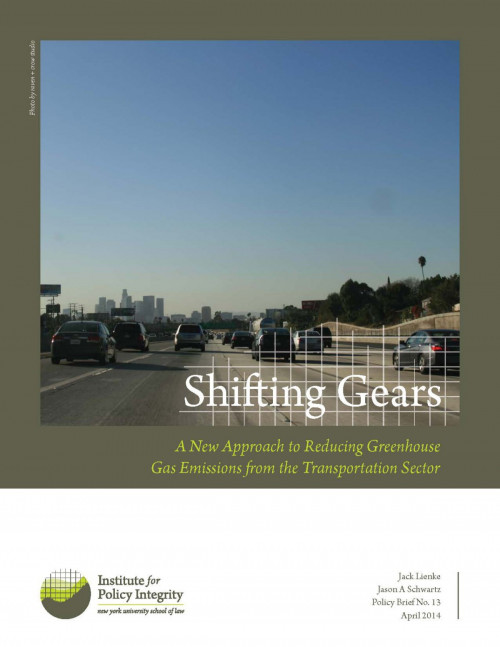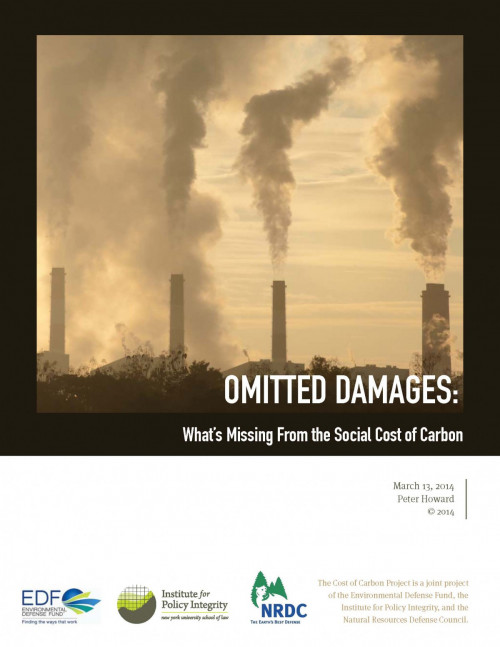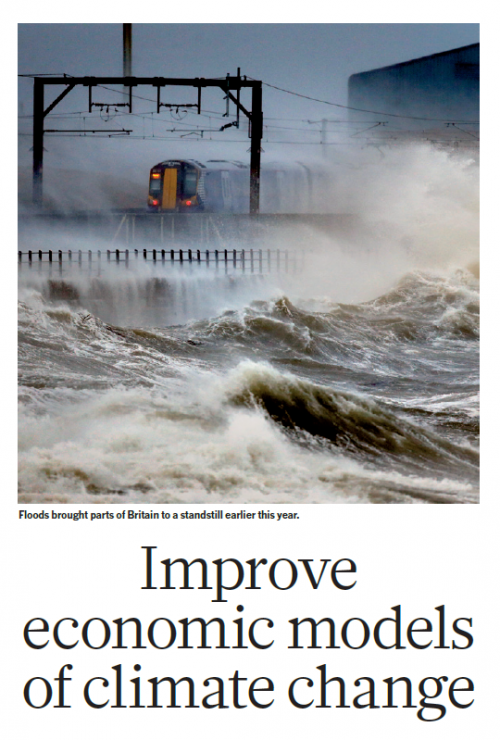-

Rethinking Health-Based Environmental Standards
In Whitman v. American Trucking, the Supreme Court interpreted the Clean Air Act to require the EPA to set the National Ambient Air Quality Standards (NAAQS), without considering costs. Instead, the agency must rely exclusively on health-related criteria. The authors argue that such health-based standards are problematic because there is no coherent way to set the permissible level of pollution based on health considerations alone and, ironically, the NAAQS have generally been set at levels that are inefficiently lax from an economic perspective. The authors urge a reinterpretation of the American Trucking case that would allow the EPA to consider costs-benefit analysis when it would lead to more stringent standards, as it currently does for most regulated pollutants.
-

Shifting Gears
A New Approach to Reducing Greenhouse Gas Emissions from the Transportation Sector
To overcome a stall out of “command-and-control” regulations for biofuels, EPA should move towards a flexible, market-based emissions trading system for the transportation sector.
-
Global Warming: Improve Economic Models of Climate Change
Costs of carbon emissions are being underestimated, but current estimates are still valuable for setting mitigation policy, say Richard L. Revesz, Peter H. Howard, Kenneth Arrow, Lawrence H. Goulder, Robert E. Kopp, Michael A. Livermore, Michael Oppenheimer, and Thomas Sterner in Nature.
-

Omitted Damages: What’s Missing from the Social Cost of Carbon
The social cost of carbon is an estimate of the economic damage done by each ton of carbon dioxide spewed into the air. Howard examines the Integrated Assessment Models used to produce the social cost of carbon estimate and gives a comprehensive review of what each model accounts for and what each model misses.
-
_110_86_90.jpg)
Quantifying Regulatory Benefits
The author responds to an argument made by Cass Sunstein that administrative agencies should use breakeven analysis when unable to quantify benefits of a specific regulation. Breakeven analysis seeks to determine how high nonquantifiable benefits of a regulation would have to be for the benefits to justify the costs. In this Comment, the author argues that breakeven analysis can be useful but is always a second-best technique. The first-best approach is to quantify the benefit.
-

Cost-Benefit Analysis and Agency Independence
In “Cost-Benefit Analysis and Agency Independence,” Professor Michael A. Livermore argues that cost-benefit analysis provides a standard that constrains the exercise of OIRA’s power, helping to preserve the autonomy of government agencies in the face of White House review. This argument challenges the prevailing view that cost-benefit analysis is a tool for the President to impose authority over executive agencies.
-
Burning Rain: The Long-Range Transboundary Air Pollution Project
Book Chapter
This chapter, in Toxic Airs: Body, Place, Planet in Historical Perspective, assesses the development of the first international study to examine the atmospheric transport of pollutants that cause acid precipitation: the long-range transboundary air pollution project.
-
_158_115_90.jpg)
Water Pollution and Regulatory Cooperation In China
The costs of China’s record economic growth—including pollution—threaten to undercut its progress if left unchecked. Standing in the way of China’s efforts to control pollution is a complex political system of overlapping levels of local and national authorities. This paper examines recent efforts to address the ill-aligned incentives lead some officials to allow high levels of pollution.
-
Environmental Awareness in the Atomic Age
Radioecologists and Nuclear Technology
Many biologists who conducted studies on nuclear fallout and waste for the Atomic Energy Commission began to develop concerns about radioactive pollution in the environment from the long-term, cumulative effects of nuclear waste disposal, the use of atomic bombs for construction projects, and the potential ecological devastation wrought by nuclear war. Their new environmental awareness prompted many Atomic Energy Commission ecologists to try to draw congressional attention to the dangers that nuclear technology posed to the environment. This article, published in Historical Studies in the Natural Sciences, highlights reforms in the education and training of ecologists to meet the challenges of the atomic age through the new subfield of “radioecology” as well as research into problems of environmental pollution more broadly.
-

Regulatory Report
Affirmatively Furthering Fair Housing
Decades after the civil rights movement inspired the Fair Housing Act, HUD still has a long way to go before that law’s vision of fair housing is realized. The primary recommendations of this report to the Department of Housing and Urban Development (HUD) are to more clearly define fair housing goals and to measure the progress of locally-based housing providers in meeting the requirements of the 1960’s civil rights statute.
Viewing recent projects in Publications

